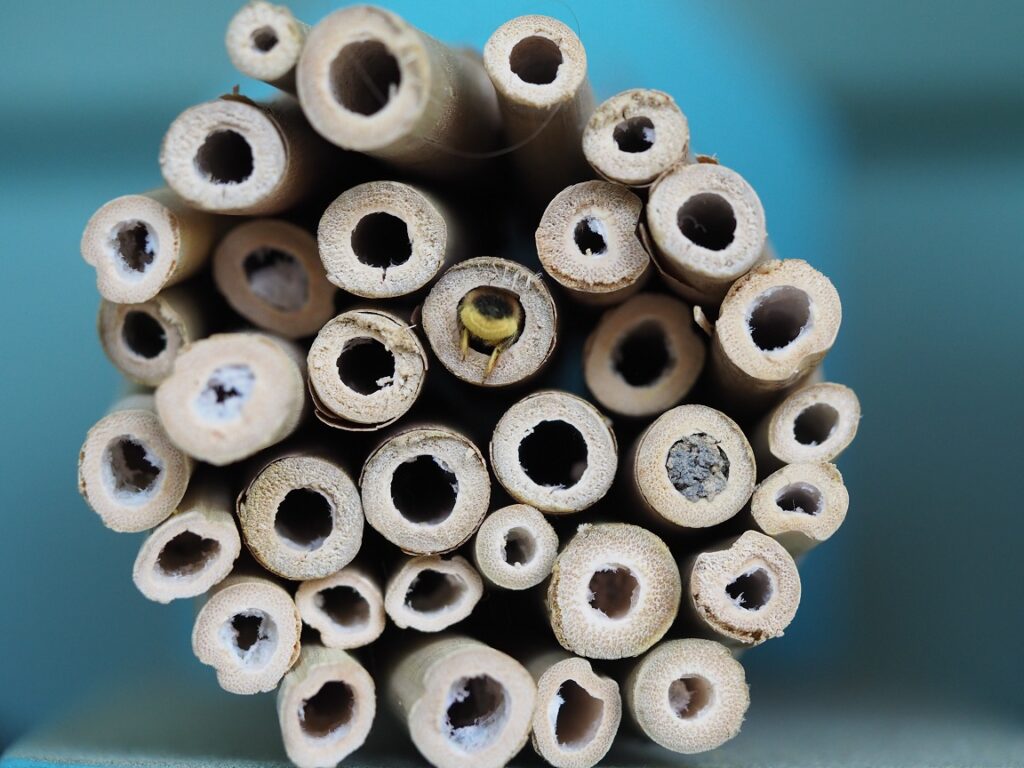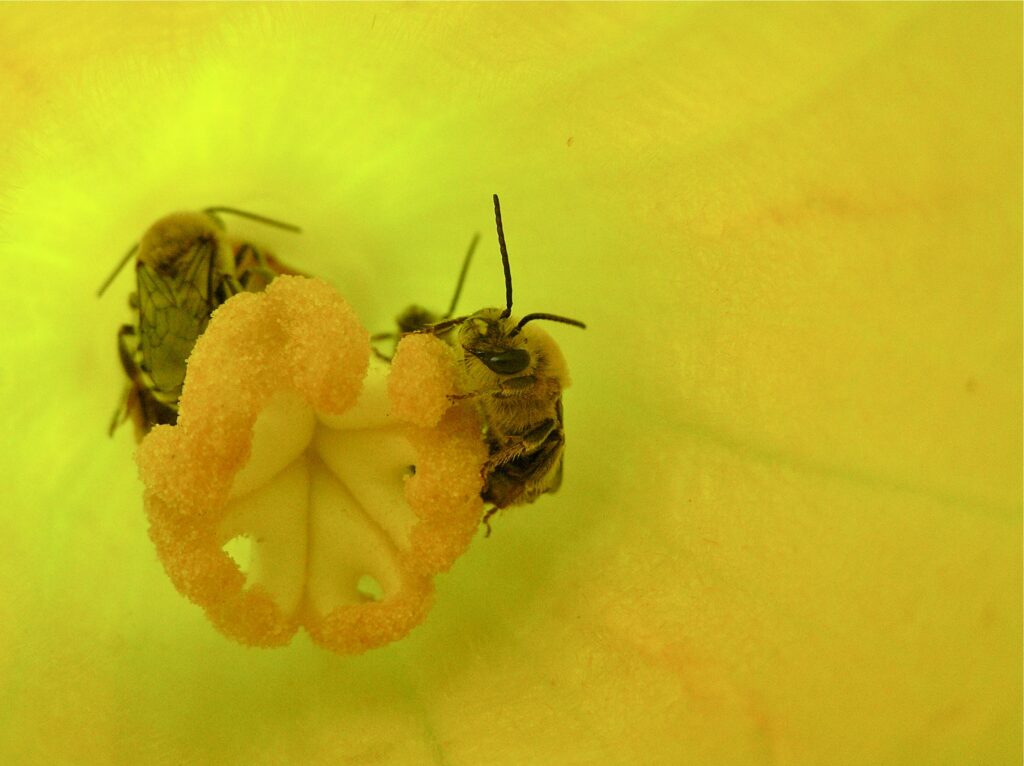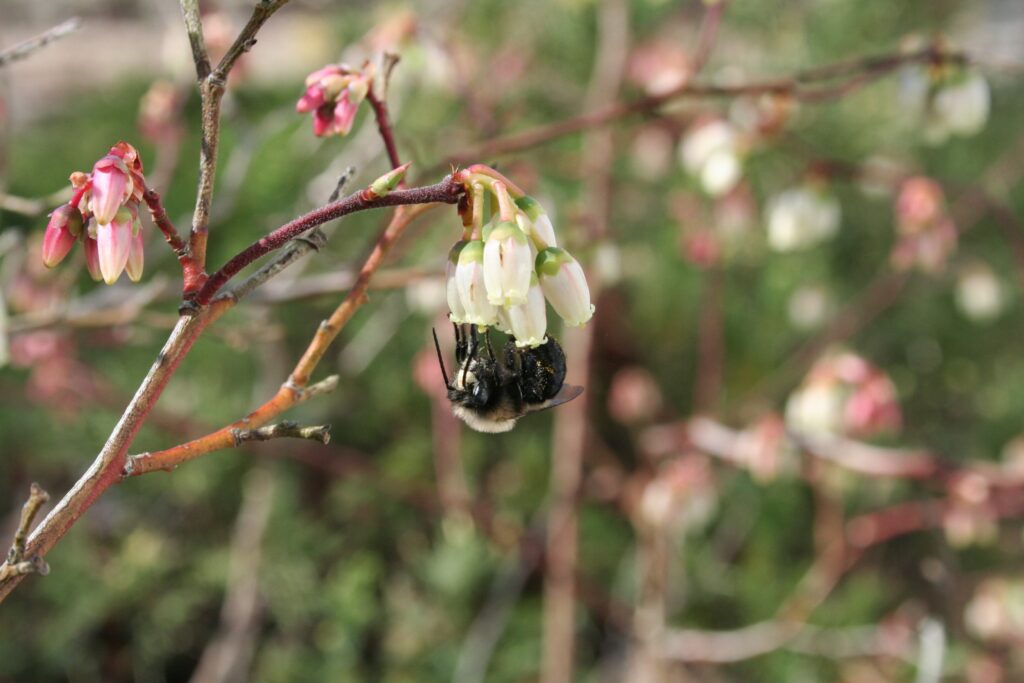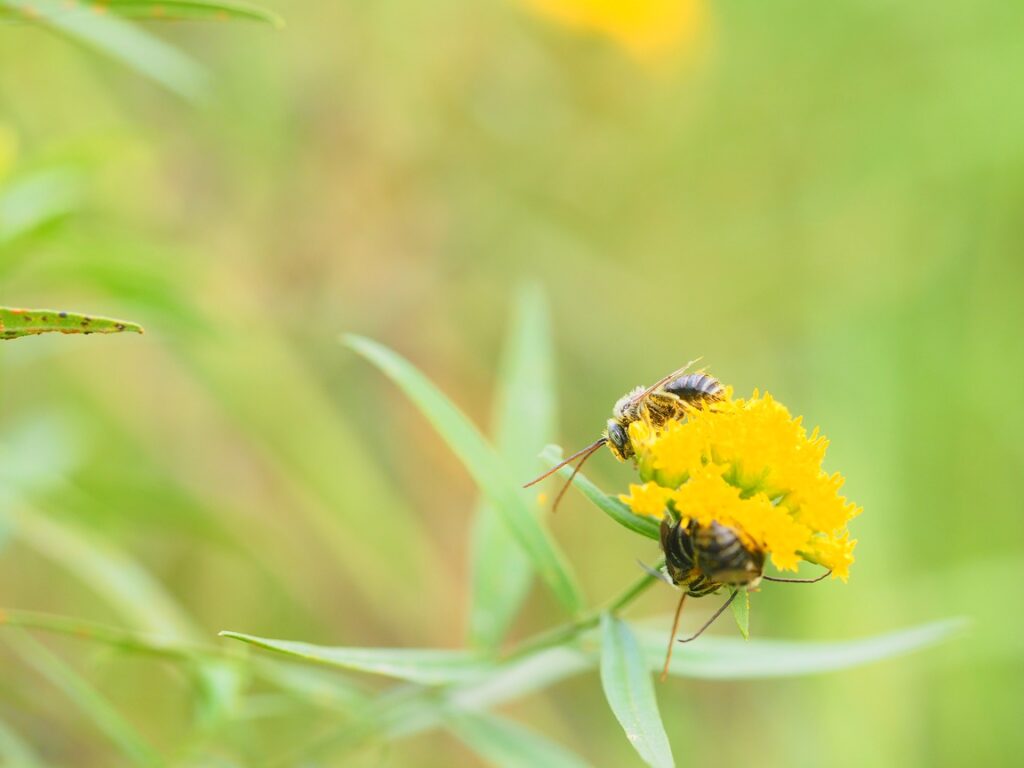By Dr. Nancy Lee Adamson, Senior Pollinator Conservation Specialist, Xerces Society and USDA NRCS
Learning to recognize native bees can seem daunting. Where I live in North Carolina, there are more than 500 species, and out west, in drier landscapes, that number may double or quadruple. So, when I give programs on native bees, I like to highlight all the bees that can be identified to genus or even species in the field. Often people don’t give themselves credit for all the different bees they already recognize. We all know the European honey bee, Apis mellifera. We also all know bumble bees, Bombus spp., though sometimes they’re mixed up with large carpenter bees, Xylocopa spp., the ones we say have “shiny hinies” compared to bumble bees. Most of us know mason bees, Osmia spp., and leafcutter bees, Megachile spp., because females carry pollen on their abdomens instead of legs. Along with those pollen-ful bellies, for mason bees, the dark blue or green metallic color or, for leafcutter bees, their large heads and, often, black and white striped abdomens also help clue us in on the genus. Each region has its own set of bees that can be identified without a microscope.
In my area, we have two easy to recognize all black bees that are smaller than carpenter bees. One’s pollen covered belly and large head make it easy to spot as our only all black leafcutter, known as the carpenter bee mimic, Megachile xylocopoides. The female and male of this species are dimorphic—they look different from one another: both have black bodies, but the male has fluffy light hairs on his front legs that look like big mittens that he uses to cover the females eyes when mating. The two-spotted long-horned bee, Melissodes bimaculatus, is our other all black female bee, except for two tiny white spots on her rear end. Her male counterpart has longer antennae (“long horns”) and a black body, but a big light patch on his face (both have some light-colored hairs on their legs). You may find these males tightly congregating on a plant to sleep overnight. Many recognize green metallic bees in the genus Agapostemon that have either white or yellow and black striped abdomens.
Other bees can be recognized and/or guessed at based on the flowers they visit. Specialist bees eat pollen from one family, genus, or species, but may collect nectar from a variety of plants. Many people are familiar with specialists like squash bees, blueberry bees, and rose mallow bees. Knowing when the flowers bloom, there’s a good chance we can see the bees if we grow their host plants at home or visit areas with those plants at the right time. That’s the subject of my upcoming webinar on March 16th (which will be recorded and available on Xerces’ YouTube channel). When I first put a specialist bee slide show together for the Wild Bee School in Ohio, I couldn’t find photos of many of those listed on the website Jarrod Fowler and Sam Droege created, Pollen Specialist Bees of the Eastern United States, so I asked the participants to consider documenting bees on those plants. Droege, at the USGS Native Bee Inventory and Monitoring Lab, also put out a call to bee researchers and reshares phenologies to remind folks to be on the lookout when various bees will likely be active. We’d love your help with this, too! My upcoming webinar will highlight what we know (mainly about eastern bees) and resources you can use to help document and deepen our understanding of not only very special bees, but all the life around us.
Community Science Resources for Monitoring and Identifying Bees and Other Wildlife
- BugGuide Invertebrate ID guides. When you upload photos, experts will review and identify them. This is an excellent place to explore whether you have no idea or a good idea what you’ve found.
- Bumble Bee Watch This was created in response to steep declines in bumble bees. Individuals across the country help to document rare and common species.
- (Bumble Bee) Queen Quest Help us learn more about overwintering queen bumble bees, their phenology, and how climate change may be affecting bumble bees.
- DiscoverLife This includes various ID nature guides, including bees. The bee data were initially from T. B. Mitchell’s Bees of the Eastern United States, but is constantly expanding.
- iNaturalist Upload photographs and sounds of any wildlife. Your observations may help scientists understand more aspects of specific organisms and their relationships within natural communities. When documenting rare species, you can choose to obscure locations. You label observations with help from the iNaturalist app and when enough community members agree on an identification, the identification is considered validated. This app is available through a web browser or phone.
- Seek (by iNaturalist) This is an excellent identification tool for anyone, originally designed to engage children outdoors with challenges/rewards. This app is only available for a phone.

















